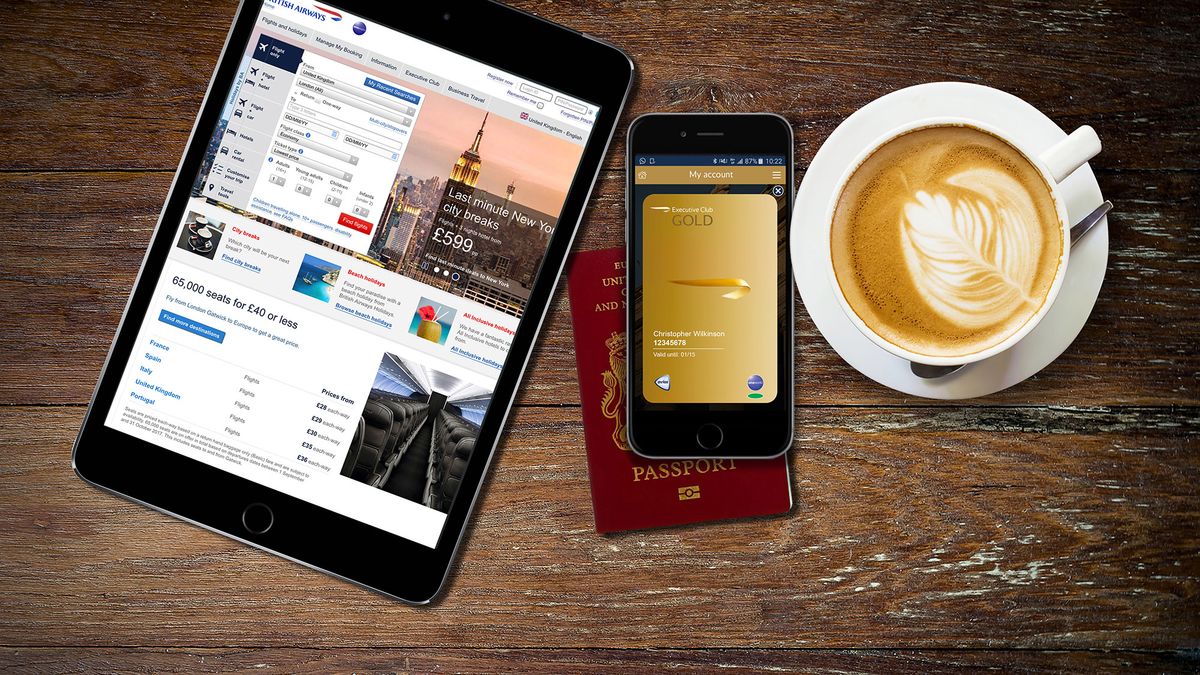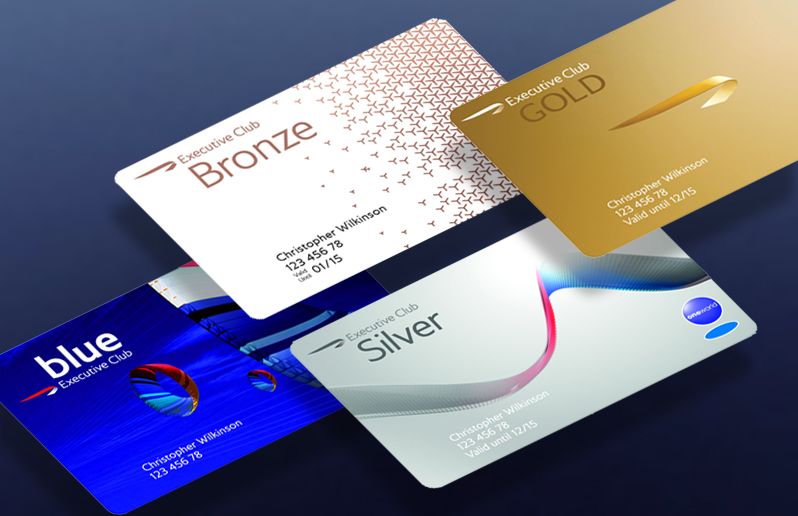Is BA Executive Club membership worth it for Australian travellers?
After a near two-decade hiatus, Australians are once again welcome in Executive Club: but it's not a perfect fit for every flyer.

After an 18-year pause on new membership applications from Australian-based travellers, British Airways’ Executive Club frequent flyer program is finally welcoming fresh batches of Aussies among its ranks.
But with many Australian jetsetters being loyalists to the Qantas Frequent Flyer program, is Executive Club worth the switch?
As it turns out, Executive Club may be a great fit for those regularly flying with many different airlines across the Oneworld alliance – but can be less appealing to those who earn most of their points on the ground, such as from Australian credit cards.
- Why would Australians join Executive Club?
- Where and how can I earn BA Avios?
- What are Tier Points?
- Executive Club membership tiers
- What about BA Gold Guest List?
- Complimentary upgrades for Executive Club Gold
- Partner status for Executive Club Gold
- What are the best ways to spend Avios?
- Do British Airways Avios expire?
Why would Australians join Executive Club?
For many, status may prove easier to earn in Executive Club than in other Oneworld programs like Qantas Frequent Flyer, given BA awards ‘Tier Points’ at the same rates on both British Airways and partner airline flights.
Add to that, through its Oneworld partnership with Qantas, BA’s elite cardholders enjoy many of the same privileges as tiered Qantas Frequent Flyer members.
This includes the familiar priority check-in and boarding, along with access to the Roo’s Qantas Clubs, Business Lounges, and Qantas First Lounges, depending on the traveller’s BA status.
Beyond status alone, Executive Club members can also earn and spend ‘Avios’ – both online and over the phone (call 1300 767 177 within Australia).
That’s the name BA gives to frequent flyer points, and although it can be tricky to earn lots of Avios in Australia, domestic flights Down Under are one of the better ways to spend those rewards.
If you’re not already an Executive Club member, you can join online for free, and use this guide to help make the most of program.
Where and how can I earn BA Avios?
Along with flights aboard British Airways, Executive Club members can also earn Avios when travelling with any Oneworld alliance airline.
This includes Qantas on both domestic and international flights, as well as other major carriers such as American Airlines, Cathay Pacific, Japan Airlines, Malaysia Airlines, Qatar Airways, and more.
With Qantas, earning Avios is possible across first class, business class, premium economy and economy, with the exception of Qantas discount economy fares sold in E-class, which are generally the airline’s most cut-price sale tickets.
Through BA’s other partnerships, Avios can also be earned when travelling on selected airlines outside the Oneworld alliance, including Aer Lingus and LATAM.
Other ways to earn BA Avios
It’s also possible to build your Avios balance when staying a range of participating hotel chains – among them, Accor, Best Western, Hyatt, IHG and Marriott – and by using selected accommodation booking sites like Airbnb, Avios Hotels, Booking.com, Hotels.com, Kaligo.com, and Rocketmiles.
BA’s partnerships also stretch to car hire, with Avis, Budget, and Zipcar on board.
Its downside is that there are no opportunities to directly convert any Australian credit card or charge card points into Avios – so if most of your points are earned on the ground, other Oneworld programs like Qantas Frequent Flyer or Cathay Pacific Asia Miles may remain a better fit.
What are Tier Points?
To measure your progress towards elite frequent flyer status, BA uses Tier Points. Consider them the Executive Club equivalent of status credits.
You’ll earn Tier Points when you travel with British Airways and its partner airlines – and one advantage of Executive Club over some other Oneworld programs is that members earn Tier Points at the same rate on partner airline flights as they would on British Airways.
This means travelling aboard the likes of Cathay Pacific, Qantas and Qatar Airways sees Tier Points accrued at the same rates as for BA flights of the same class and distance.
Executive Club membership tiers
Beginning at the Blue tier, travellers can work their way up through the ranks of Bronze, Silver and Gold status.
Here’s how those tiers line up against Oneworld, and Qantas Frequent Flyer.
- BA Blue = Qantas Bronze (entry-level members)
- BA Bronze = Oneworld Ruby = Qantas Silver
- BA Silver = Oneworld Sapphire = Qantas Gold
- BA Gold = Oneworld Emerald = Qantas Platinum
This sees BA Bronze members enjoying perks like priority check-in, BA Silver members having access to BA and Oneworld business class lounges (or in Australia, domestic Qantas Clubs), and BA Gold members enjoying access to first class lounges (and Australian domestic Business Lounges).
Here’s how many Tier Points are normally required to climb that status ladder:
- BA Bronze: 300 Tier Points plus 2 British Airways flights
- BA Silver: 600 Tier Points plus 4 British Airways flights
- BA Gold: 1,500 Tier Points plus 4 British Airways flights
While those Tier Points can come from travel with any Executive Club partner airline (including Qantas), those elite tiers also require the traveller to take a minimum number of British Airways flights each year.
That annual requirement is easily met for Silver and Gold when taking a return BA trip from Sydney to London via Singapore, where the traveller changes flight numbers in transit.
BA Bronze members could meet the same goal in a single one-way journey, when similarly changing flight numbers.
Due to COVID-19, those regular Tier Point requirements above for BA Bronze, Silver and Gold are temporarily reduced by 25%.
Read more: BA offers travellers a fast-track to status
What about BA Gold Guest List?
Roughly the BA equivalent of Qantas Platinum One, Executive Club Gold members join the ranks of Gold Guest List after earning 5,000 Tier Points in a single year.
Travellers can remain on the Gold Guest List with 3,000 Tier Points per year thereafter.
Under recent changes to Executive Club, this adds access to the British Airways Concorde Rooms at London Heathrow and New York JFK to the list of perks enjoyed by ‘regular’ Gold cardholders.
Concorde Room access is provided when travelling on any Oneworld airline in any class of service – whereas the Concorde Rooms would normally require a ticket in British Airways first class.
Read more: BA axes Concorde Room Card, opens elite lounge to more frequent flyers
Complimentary upgrades for Executive Club Gold
Executive Club Gold members who amass 2,500 Tier Points in a single year qualify for a ‘Gold Upgrade for Two’ voucher, known among frequent flyer circles as a ‘GUF2’.
This provides a free upgrade to the next-best class of service versus the cabin booked – from premium economy to business class, for example – for the Gold member and a companion on the same reservation.
Those who hit an even higher balance of 3,500 total Tier Points per year are also gifted two ‘Gold Upgrade for One’ vouchers.
Known as ‘GUF1’ vouchers, these work in a similar way, but with one voucher required per traveller – allowing solo flyers to upgrade two trips, or companions travelling together to bump-up a single journey.
As you continue travelling, you can also unlock a further ‘GUF2’ upgrade after earning 7,000 Tier Points in a single year.
Partner status for Executive Club Gold
Travellers who hit 5,000 Tier Points in a single year – that’s more than three times the normal threshold for earning a regular Gold card – get something extra special.
At such lofty heights, a friend or family member can be gifted their own Executive Club Gold card, even if they haven’t taken a single flight of their own.
Aligning with Oneworld Emerald status, that grants the recipient access to Qantas’ domestic Business Lounges in Australia, and international first class lounges around the world, including BA’s Galleries First locations (although the Concorde Room is excluded).
In addition, the high-flying traveller can issue two further elite cards at the Executive Club Silver ranking.
Being Oneworld Sapphire, that's on-par with Qantas Gold, granting access to domestic Qantas Clubs and international business class lounges.
What are the best ways to spend Avios?
For members based in Australia, using Executive Club Avios on domestic Qantas flights tends to be one of the better ways to go.
That’s especially true when your journey is short and you’re looking to book business class.
On popular routes like Sydney-Melbourne and Sydney-Brisbane, a one-way business class ticket can be yours for just 12,500 Avios – while slightly longer routes like Brisbane-Melbourne clock in at 16,500 Avios.
By comparison, Qantas Frequent Flyer requires 18,400 Qantas Points on those short Sydney-Melbourne and Sydney-Brisbane hops, and a much higher 27,600 Qantas Points for Brisbane-Melbourne.
You’ll still need to cover the taxes, fees and carrier charges on top – but given Avios are otherwise harder to earn in Australia, bookings like these that can be achieved with a relatively low balance are among the best ways for Australian members to spend their BA miles.
The balance swings less in British Airways’ favour when using Avios to book longer flights, however.
Do British Airways Avios expire?
Unlike Qantas Frequent Flyer which expires points after 18 months of inactivity, British Airways gives its members 36 months before their hard-earned Avios will expire.
BA also uses rolling expiry dates – mirroring the approach of Qantas and Velocity Frequent Flyer – rather than a ‘hard’ expiry policy like Singapore Airlines’ KrisFlyer scheme.
This means as long as you earn or spend at least one Avios every three years, your entire balance of points remains safe.
Those who do find themselves approaching an expiry date on their miles could simply book and take a single points-earning flight (including a Qantas domestic flight), or could transfer a small number of points across from a partner hotel loyalty program, or even buy a small chunk of Avios.
Also read: BA Lifetime Gold is the next-best thing to Qantas Lifetime Platinum



28 Sep 2018
Total posts 13
I flew Qatar Per - LHR return Business Class using my BA Exec Club card and didnt realise that you needed 2 BA flights to gain tiers. So I lost out on tiers with Qatar, tiers with BA and my wife moved up a colour as she used her Q miles card! I should have switched airlines in Doha but I didnt realise that. But I would have lost tier status with BA after a year anyway.
I also lost out on BA lifetime points as so many flights over the 30 years or more weren't shown and you could only claim if you had boarding passes!! There were some stupid examples of single flights to destinations like Vancouver, Seattle, NYC where I had booked return BA flights, as when I lived in the UK I always flew BA Club World - until I moved to Perth in Australia which they abandoned.
I keep my avios alive by buying wine in BA Wine Club and sending to my UK daughters. You get 250 avios with each case.
Thai Airways International - Royal Orchid Plus
15 Jan 2013
Total posts 464
Not really.If they much like aadvantage american airlines have charities you can donate miles to it would be different but not for me.I am with AA and Qantas and the latter helps me at the supermarket.
Hi Guest, join in the discussion on Is BA Executive Club membership worth it for Australian travellers?